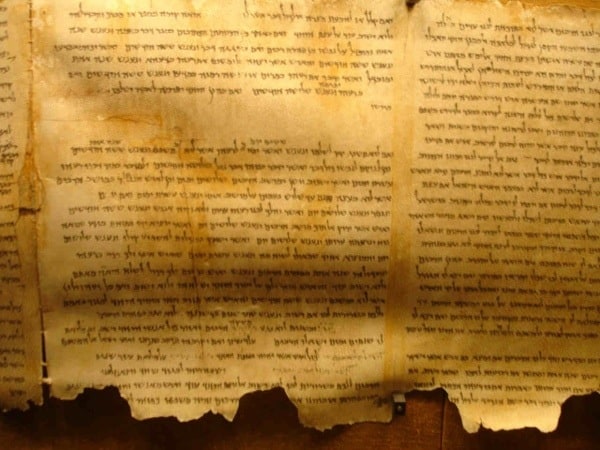Near the northwest corner of the Dead Sea, there is a long-deserted settlement known as Qumran. Here, it appears that a discontented Jewish sect maintained a thriving religious community in the second century B.C. and again in the first century A.D.
At one point, this community’s library contained more than a thousand sacred scrolls. Some scrolls were copies of Old Testament texts. Others provided explanations and applications of the Hebrew Scriptures. Still others preserved rules for the Qumran community.
The Qumran community rules contain some of the more entertaining lines in the Dead Sea Scrolls—well, at least they entertain me.
In the Qumran community, waving at someone with your left hand led to ten days of punishment. Spitting, snorting at something that wasn’t supposed to be funny, or accidentally mooning someone warranted thirty days of penance. For streaking, the penance lasted six months (1QS, 7; 4Q258). Evidently, once you joined the Qumran community, you kept your jokes to yourself, your saliva in your mouth, your left hand in your pocket, and your loincloth securely tied.
In any case, when the Roman army ravaged the province of Judea around A.D. 70, the Qumran community sealed their sacred texts in jars and hid them in nearby caves. Most likely, the community planned to return to the caves to recover their scrolls—but, as far as we know, none of them ever made it home.
There, the scrolls remained hidden until 1947, when a young shepherd named Muhammad edh-Dhib lost his sheep and didn’t know where to find them.
According to the story that was related later, Muhammad tossed a rock into a cave, perhaps to determine whether some of his animals had found shelter in the shadowed interior. What he hoped to hear was the bleating of a stone-struck sheep—but that wasn’t what he heard at all. What the shepherd heard instead was the shattering of pottery. For nearly two millennia, sealed jars had preserved the ancient rolls of parchment that quickly became known as “the Dead Sea Scrolls.”
But what do these documents have to do with Jesus and the first Christians? Find out in this video:
Video courtesy of Christianity.com
30 Days through Church History: Day 5

